| Accessories | Bicycles | Parts | Specials | Tools | View Cart |
|---|
 |
|---|
Traditional Thread-On Freewheels
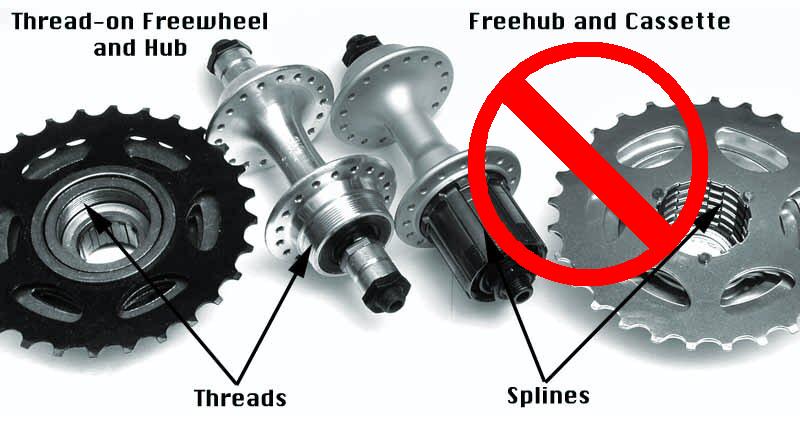
Not sure whether your bike uses a freewheel or cassette? Click here! Compatibility Notes.
| 1-speed | 5-speed | 6-speed | 7-speed |
|---|
| Accessories | Bicycles | Parts | Specials | Tools | View Cart |
|---|
 |
|---|

Not sure whether your bike uses a freewheel or cassette? Click here! Compatibility Notes.
| 1-speed | 5-speed | 6-speed | 7-speed |
|---|
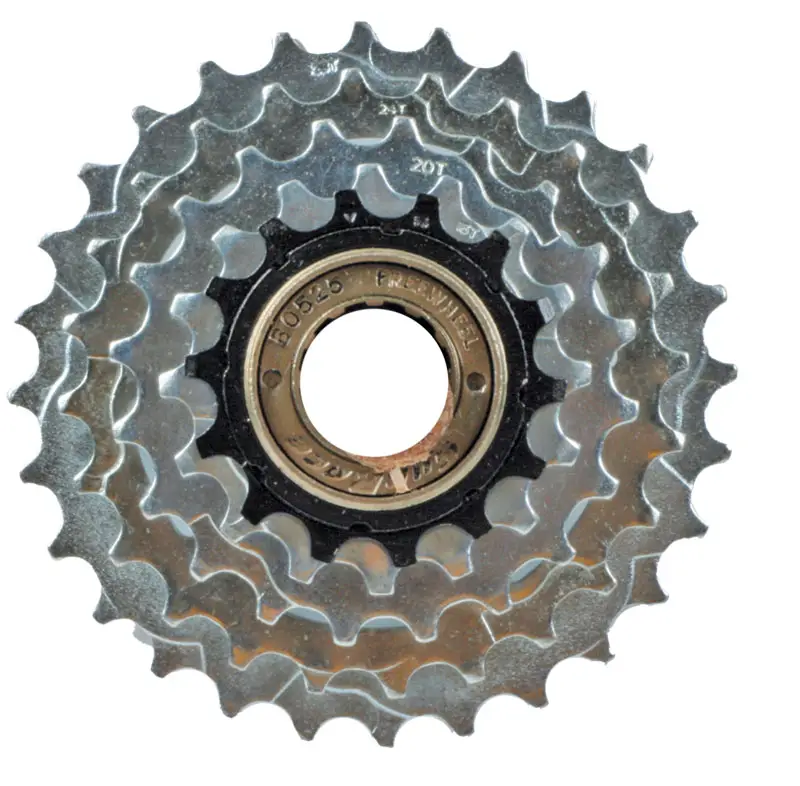
Compatibility note! If your bike currently uses a 6-speed freewheel, it may be a good candidate for conversion to a 7-speed!The sprockets are closer together on a 7-speed, so the overall width is only a tiny bit wider for a 7-speed vs a normal 6-speed. In rare cases, you might need to add a washer or two to the axle for clearance in the smallest sprocket.
If your bike has friction shifting , it will definitely work with either 6 or 7. If you have indexed shifting , generally you would need to replace the shifter.




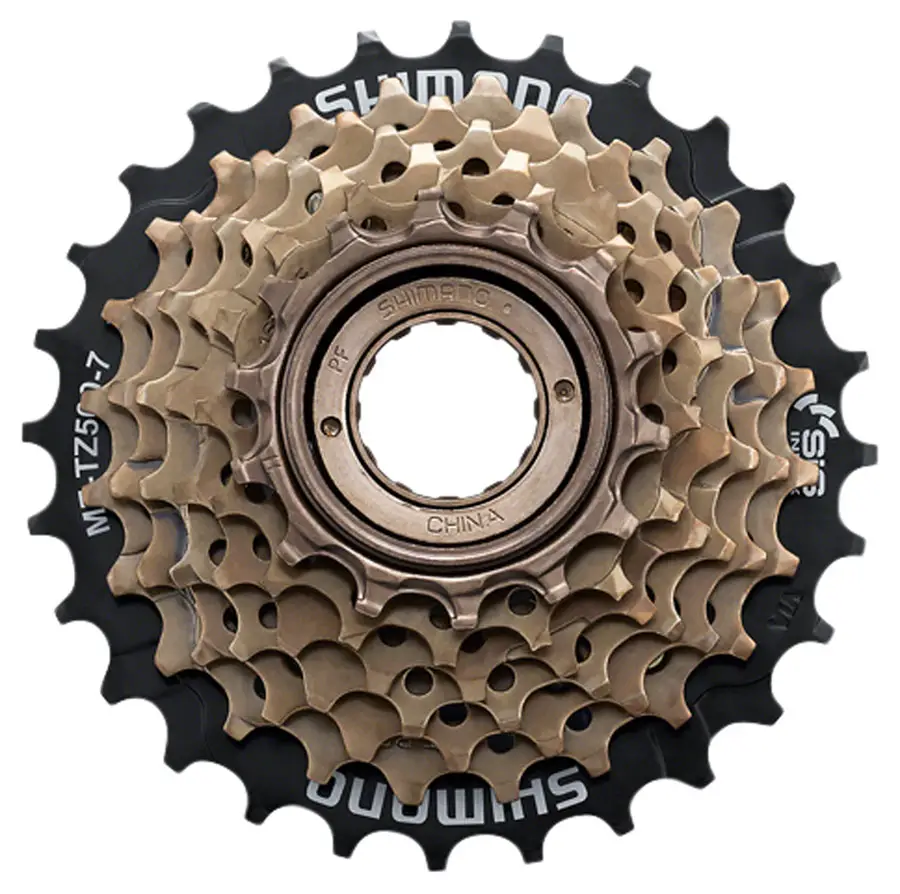

Excellent general-purpose freewheel. Almost any rear derailer will handle the 28 tooth big sprocket.


"Alpine" design, with closer spacing between most of the sprockets for efficient cruising, and the huge 34-tooth "bail-out" gear for the tough hills.A wide-range rear derailleur is required.

Close-ratio 7-speed freewheel, excellent choice for those who mainly ride in gentle or flat terrain, or for rolling terrain with a triple in front.
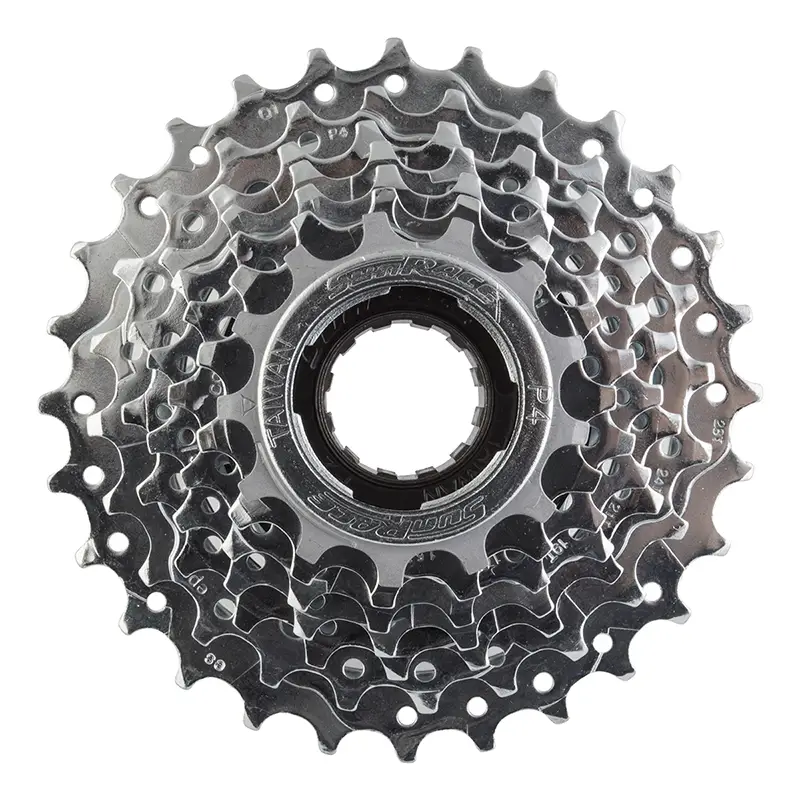

Excellent general-purpose freewheel. Almost any rear derailer will handle the 28 tooth big sprocket..
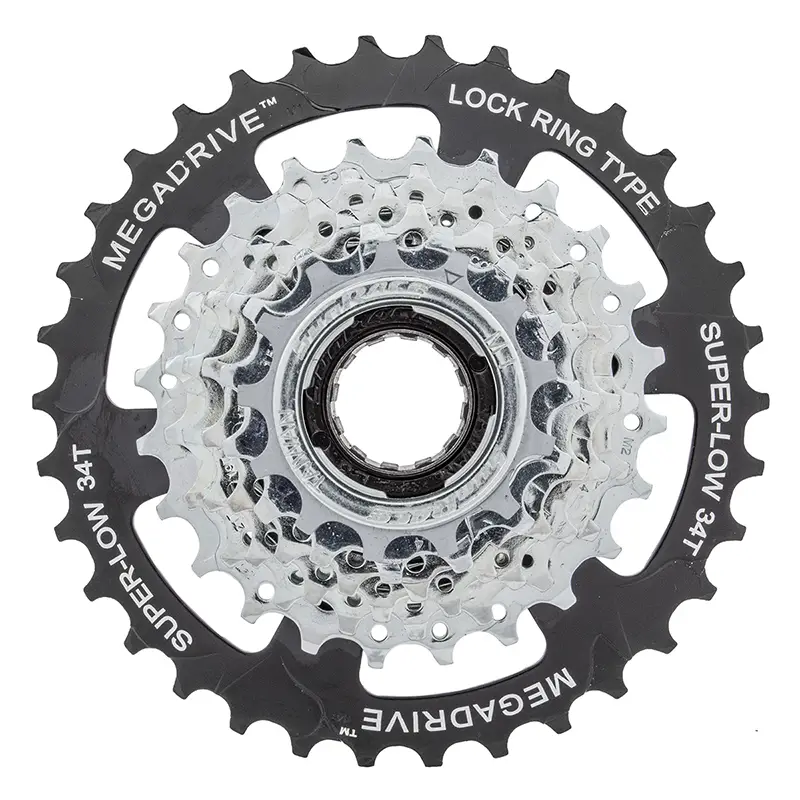

"Alpine" design, with closer spacing between most of the sprockets for efficient cruising, and the huge 34-tooth "bail-out" gear for the tough hills. A wide-range rear derailleur is required.
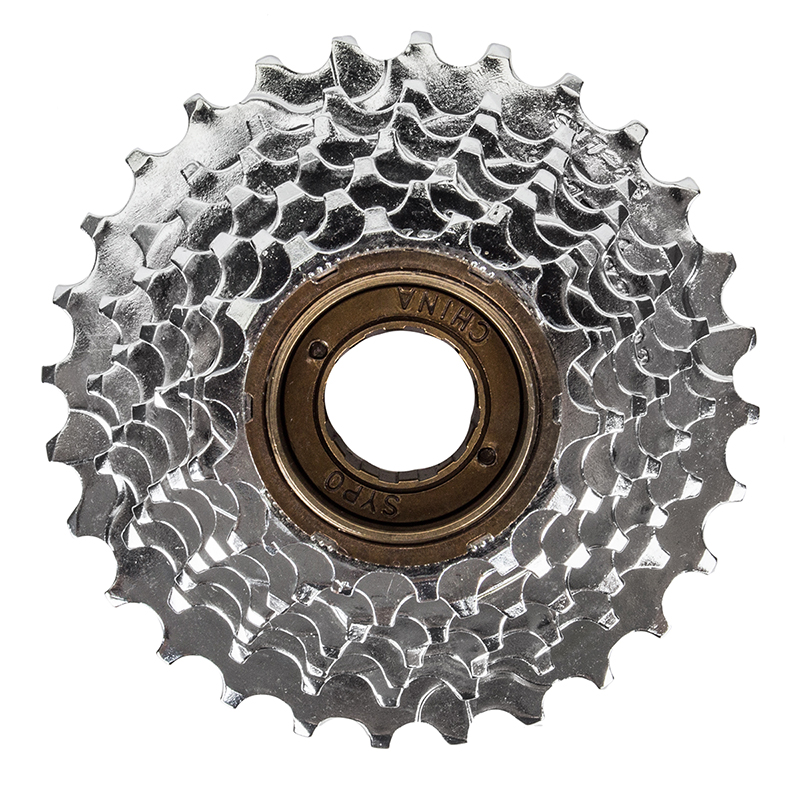

Budget-friendly, general purpose freewheel.
Threading
Freewheels shown on this page fit the threads of all standard freewheel hubs, with the exception of some older French hubs that used a different size .Friction Shifting
Bikes made before the mid 1980s had "friction" shifting, where the shift levers move smoothly from one end of the range to the other, and only the rider's skill could get the derailer to line up properly with whichever sprocket was desired.If you use friction shifting, any brand of shifter works with any brand of derailer and any brand of freewheel with any number of sprockets.
Indexed Shifting
With indexed shifting, the shift lever has a "click stop" that corresponds to each of the gear postions. This makes for easier shifting, but limits your options for mixing different brands of components.
5-Speed to 6- or 7-Speed
Hubs originally intended for 5-speed freewheels can be converted to use 6- or 7-speed freewheels. You will generally need to add a few spacer washers to the right side of the axle, building it up far enought that the cone locknut can reach the frame dropout through the wider freewheel body. You will need to re-center the axle but probably won't need to replace it with a longer one. You'll also need to re-dish your wheel , and probably re-space your frame. If you're fairly handy, this is not an unreasonable thing to do.6 Speed to 7 Speed
If your bike currently has a regular-spaced 6-speed freewheel, you can generally upgrade to 7-speed with little trouble. Since the sprockets are closer together on a 7-speed freewheel, the overall width is only very slightly wider than a regular-spaced 6-speed. You might need to add a thin washer to the right side of your axle to keep the chain from rubbing the frame in the highest gear.
Shimano freewheels are by far the best value going. These are still in production, and their Hyperglide design makes them shift better than all others.
SRAM (Formerly Sachs) freewheels were well made and durable, but have been discontinued by the manufacturer.
SunTour freewheels were very high quality, very long lasting and pretty good shifting. SunTour(Japan)has been out of business since the early 1990s.
SunRace freewheels are made in Taiwan. Second only to Shimano in terms of quality and reliability for current freewheels.
Copyright © 2005, 2008, 2010, 2012, 2014, 2016, 2020 Harris Cyclery